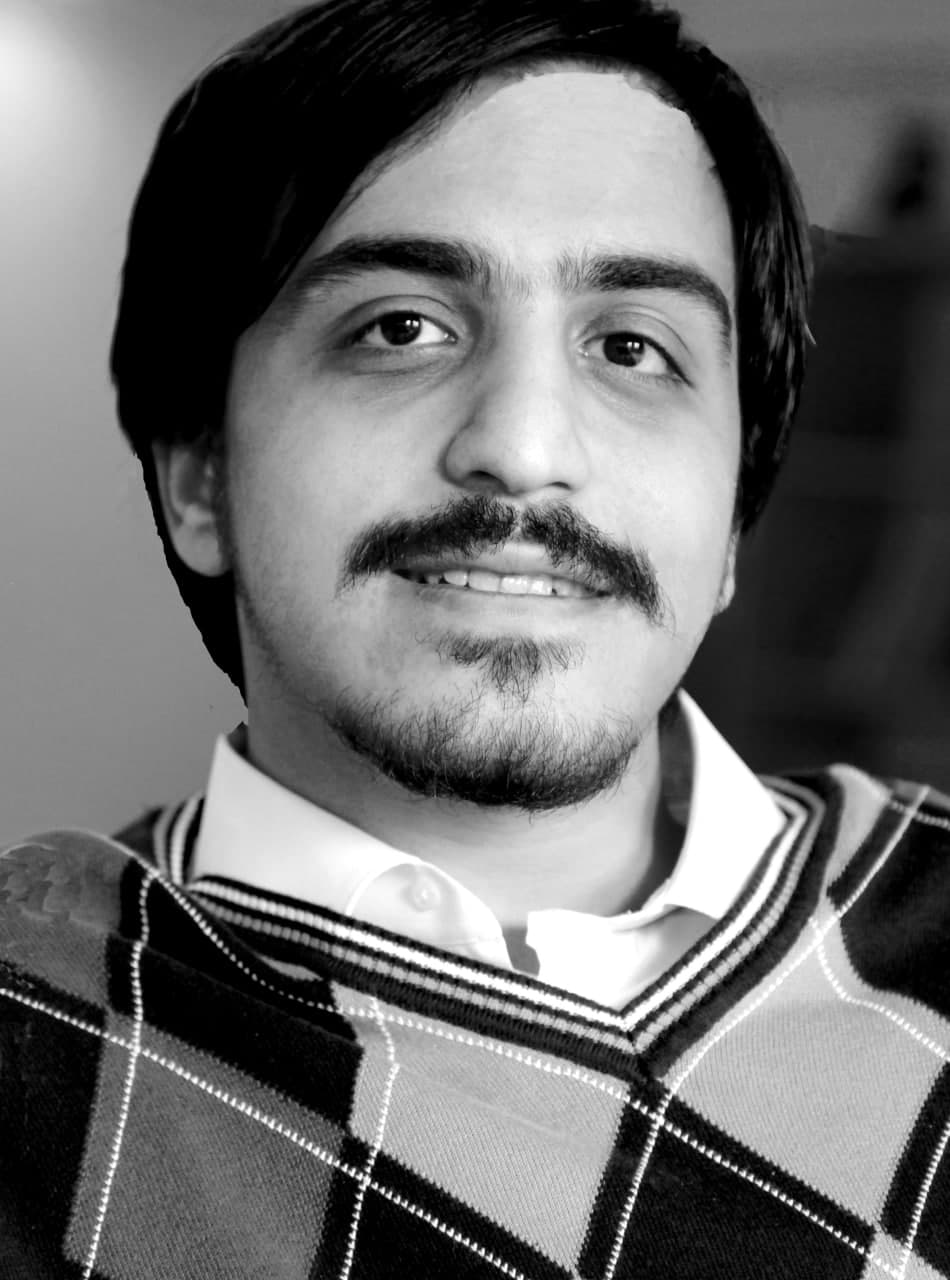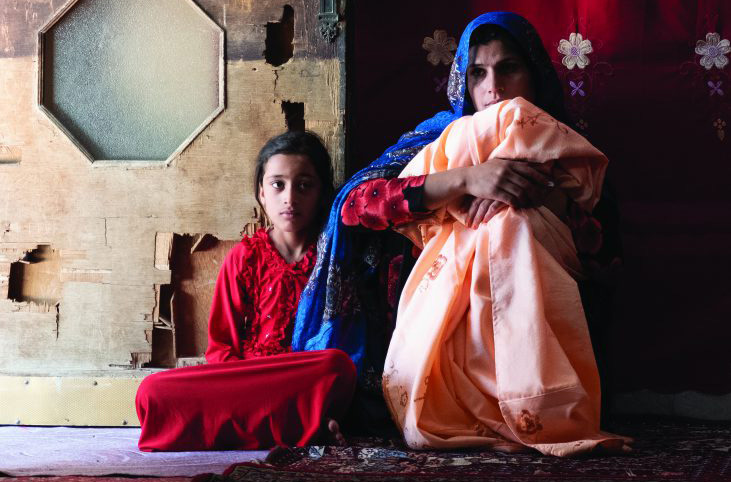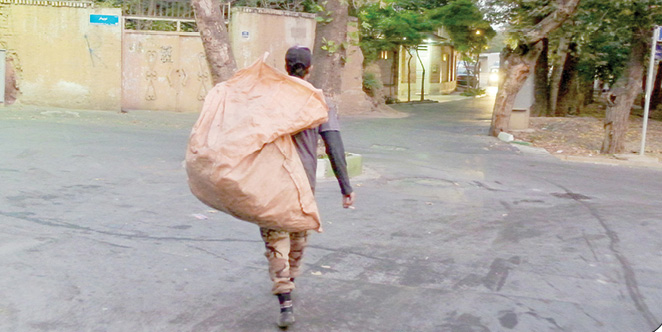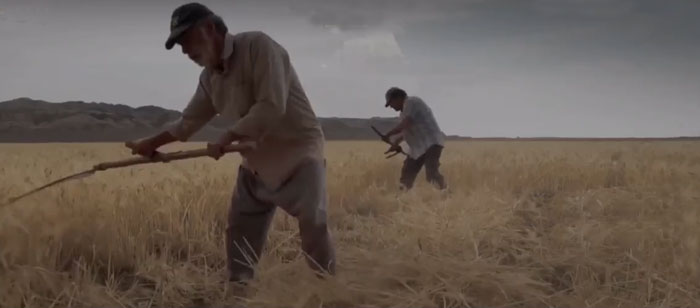Top 5 Iranian documentaries of 2020 – 2021
 15th Cinema Verite film festival as the most important documentary film festival in Iran and the middle east had a downward trend compared to the previous two years in almost every aspect. One can blame the Covid pandemic, financial sources' reduction, and increased risk for documentary production for the decrease of high-quality documentaries.
15th Cinema Verite film festival as the most important documentary film festival in Iran and the middle east had a downward trend compared to the previous two years in almost every aspect. One can blame the Covid pandemic, financial sources' reduction, and increased risk for documentary production for the decrease of high-quality documentaries.
But one should consider the effect of the festival's choice for screening the documentaries online, which puts them at risk of being leaked. This decision has caused many filmmakers to withdraw their works from the festival in fear of potential piracy.
Makeup Artist

The Internet has brought modernism to even the most secluded of villages, making the term Global Village even more tangible. But it doesn't mean that traditional beliefs, some of them having a thousand-year history, will change easily. One of such beliefs is the social role of a woman as a housewife, being the only acceptable social position for a woman, which has many believers in traditional societies even to this day. "Makeup Artist," tells the story of a pastoralist rural family with such social backgrounds. But the main point of the documentary lies in a more gripping element.
A woman wants to follow a career as a makeup artist by studying it in the university. But her husband refuses to allow her to do so. After a long process of twists and turns, eventually, the man gives in and allows her to pursue her dream but on the condition that he is allowed to marry a second wife. The wife who values her dream goes on to look for a suitable stepmother for her children. But the story takes yet another gripping turn.
Due to being of the same ethnicity, Jafar Najafi had the chance to record spectacular moments in the couple's life. His documentary is not satisfied with a superficial look on the subject and digs deeper into the matter while avoiding a one-sided judgment. Having a visually spectacular environment, Najafi is somewhat successful in creating a visually pleasing documentary. Even though documentary could develop in other ways, but most probably it would have led to a situation in which the parties involved would prefer to bury their story, not allowing us to witness such a documentary.
"Bibijan," when Child marriage meats Honor killing

"Bibijan" co-directed by Narges Joudaki and Iman Pak Nahad, tells the story of a thirteen-year-old Afghan girl who was murdered on the day after her wedding day ten years ago. She was the victim of both child marriage and honor killing almost concomitantly. Both directors are social journalists and using their understanding of such issues, they have tackled the subject matter. After researching the story, which led to a more intimate relationship with the victim's family. They began recording the story. They have tactfully avoided narrating the story, and the only information relayed to the audience is the detail within the boundaries of the documentary form, nothing more, nothing less.
The remaining impact of this honor killing allowed the filmmakers to have a different narration of such actions, And replace their judgment of the issue with public opinion. Of course, this decision can also be considered a form of judgment on the filmmakers' part. The reaction of the residents in the form of creating a sacred symbol for the victim to the killing shows that public conscience doesn't pass by such an incident so easily. Also, filmmakers got close to Bibijan's family sufficiently, not censoring this Afghan immigrant family which is under the gaze of their cameras.
The documentary does not portray the murderer, who beheaded the girl, as a monster. And portrays him and his relatives as gray characters, putting part of the blame on the community and his relatives; relatives whose pressure to restore honor has put him in such a situation. But at the same time, his negative aspects are not censored, and he acknowledges that if he is in a similar situation again, he might commit murder again. This shocking documentary is one of the best documentaries that has been screened in Iranian cinema in the last year, and although it has flaws in form and rhythm due to the lack of mastery of its creators in filmmaking techniques, it is a spectacular documentary overall.
Water, Wind, Dust, Bread
In the documentary "Water, Wind, Dust, Bread", Mahdi Zamanpour Kiasari portrays discrimination and poverty centered on the fate of a child, which is the result of an unbalanced and unjust distribution of resources and wealth in different parts of Iran. He traveled to desert and deprived areas located in Fahraj city of Kerman province and portrayed the life of Abolfazl. An eleven-year-old child with a disability in both hands, who despite his young age, behaves like an adult, as if his behavior were directed by the director.
Despite his physical condition, Abolfazl helps his mother with farming and date picking. Abolfazl's best friend is Setayesh, one of the children without a Shenasnameh, an Iranian identity booklet. She is deprived of some public services such as the possibility of studying due to the lack of identity documents. The portrayal of Abolfazl's life and the effects of significant poverty in parts of Iran is shocking enough. But the important thing is that the director did not settle for a reportorial narrative and tried to make the narrative form acceptable and worth showing on the big screen.
The film, of course, does not give a complete account of the children without Shenasname and the director prefers to deal with this symbolically and chooses to maintain the uniformity of the work and avoids providing excess information and does not lose the focus on Abolfazl. Even though the documentary doesn't show the big picture of everything, but showing it perhaps would have provoked reactions that would make the screening of such a documentary a challenge for the producers, at least at domestic festivals.
"The Lowland" is a close-up of waste picker children

Waste picking is a common scene in the big cities of Iran, to the extent that even gangs have been formed around it. The reason for the formation of these gangs is metal and plastic waste, which in total includes a turnover of hundreds of billions of tomans. From time to time, we hear the news about the sale of this waste by the municipalities to some contractors or fierce conflicts between interest groups, which is expectable given the size of this black trade.
The half-length documentary "The Lowland," co-directed by Aydin Halalzadeh and Sepideh Salarvand, features a group of child workers who, as waste pickers, search for metal and plastic waste in the garbage to earn a living. They went to Saeed lowland, which is a gathering place for waste pickers on Khavaran Road around Tehran, to find these children, some of whom are Iranians and some of whom are Afghan refugee children. These children are not soldiers of a secret army or part of a waste mafia but are ordinary kids, many of whom work for relatives such as their father or uncle.
Although the creators of this documentary are not professionals and have tried to master the documentary technique experimentally, the documentary has special visual Aesthetics, and the filmmakers have created fine compositions. These right choices are the result of several years of presence among these children, which has also led to intimacy between the filmmakers and the subjects and minimized the unnatural behavior of the subjects in the face of the camera. The important thing about this documentary is that we don't see any form of censorship of the behavior of these children, even for benevolent purposes, which has brought the documentary closer to reality.
The relatively acceptable form of this documentary as the first experience of these filmmakers in part is due to having Bahman Kiarostami, the son of Abbas Kiarostami, as the editor, who has good experience in making and editing documentaries. He even advised these filmmakers to record new scenes to improve the quality of the documentary during the editing, which ultimately made this half-length documentary one of the best documentaries in Iranian cinema in a recent year.
Fighting for survival in the Surviving Fortress

Farshad Fadaeian is one of the experienced Iranian documentary filmmakers who have a good understanding of the form for narrating a story. Fadaeian, like any other professional filmmaker, knows that the dimensions of an event or the importance of a subject's action do not guarantee the creation of a brilliant documentary, and what is more important than these components is the narrative form. There are many documentaries about reverse migration, but Fadaeian presents a different view, he created the documentary "Surviving Fortress" with his unique form.
Morteza sells all his belongings in the city and buys an old fortress on the edge of the desert connected to hectares of abandoned land and tries to fertilize this vast barren land and rehabilitate semi-arid pastures for grazing his small herd. With the help of his wife and sometimes his sons, Morteza reconstructs the ruined Qanat connected to these lands and prepares the land for cultivation. For thirty years now, he has spent his entire life on his farm. The story seems to be about an agricultural life away from society, but the form of the film has something more than that in its essence.
Realizing that the audience is probably visually familiar with the usual farm scenes, the documentary filmmaker has tried to use the capacity of the drones to capture parts of the sequences and these kinds of shots happen to portray an angle that is pristine for a large part of the audience. The advent of drones has given filmmakers a new opportunity to add a kind of look to independent, low-budget documentaries, that could only be achieved with tools such as helicopters and with substantial budgets.
At a time when people around the world are concerned about climate change, "Surviving Fortress" hints that the way out of this international crisis is to return to the roots, and Qanat, as one of the oldest methods of water distribution is one of these roots. The title of this documentary, which refers to the survival of the fortress, also implicitly refers to Morteza's thirty years of endurance and the path he has taken. Regardless of the extent to which we agree with this judgment, I can emphasize that the documentary we are dealing with is worth watching.
*Mr. Khorramdel is Director of Multimedia Office & Culture Editor in TABNAK.com he is a Filmmaker and independent film critic.


سایت تابناک از انتشار نظرات حاوی توهین و افترا و نوشته شده با حروف لاتین (فینگیلیش) معذور است.